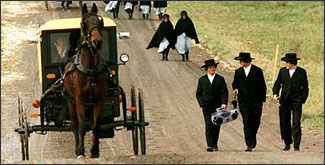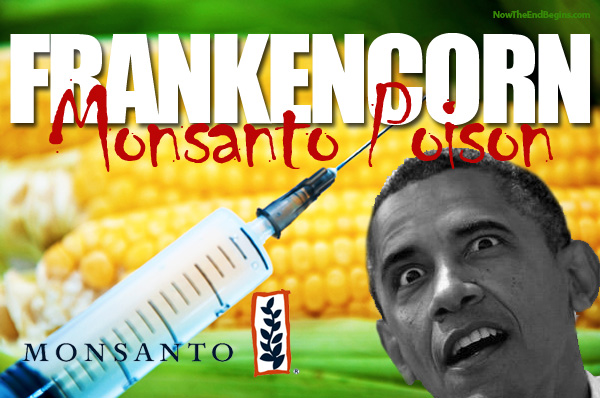Myth Busting: The Amish
The United States is such a mindbogglingly intricate melting pot of various religious sects and beliefs, that some certain strains are left to the imagination, with a foundation of knowledge that is misguided and fed with misconceptions and misinterpretations, and I am wholly guilty of that sin, myself. Up until recently, the basis of my knowledge has been from wearing out an old battered VHS copy of Harrison Ford's Witness, a typical Hollywood depiction of the Amish lifestyle with a healthy dose of gun fire and forbidden romance, and a liberal sprinkle of impressively maintained white beards and straw hats.
So, when the chance to pick the brain of a couple of people in Pennsylvania came up, one of them being actually Amish, I felt a bit giddy to actually have that tourist delight imagining riding in a horse buggy, or even raising a foundation for a wooden barn and having a massive cook out of Amish goodies with wives in bonnets and non offensive skirts, pouring out some homemade apple cider. The tourist in me was having a grand old time stumbling across the possibilities, but I kept those thoughts to myself once the talking started.
However, before we briefly interacted with a local Amish farmer, we were granted the opportunity to talk with a local dairy farmer. During the past ten years since owning and operating the dairy farm with her husband, she has had plenty of opportunities to interact with them and to get to know them, even allowing a couple of Amish boys to help around on the farm. As we picked her brain a bit more, her general outlook on the Amish lifestyle was of bewildered, if slight, annoyance with them. Gradually, she let loose her opinions on various aspects regarding the Amish lifestyle, ranging from the lack of suitable clothing they wear even in the Winter months, to the seemingly devious skirting of certain rules when in regards to electricity and the use of automobiles, and even the topic of what certain taxes they do or do not have to pay. As she kept talking, it was apparent that her opinions were not without basis, lending itself to be one sided in its outlook, which left me asking questions in my own head. When the time came to actually talk to the Amish farmer, we were met with a polite stand offish nature that seems inherent with the culture, and the questions we had for him were brief, at best. Ultimately, I avoided asking the same inane questions that would be common with the typical folk who do pick the brains of the Amish, and we left him to work in peace as he labored up the ladder to his roof.
Way back in the 16th century, during the Reformation in Europe, the anti baptist movement resulted in the creation of the Amish, Mennonites, and the Brethren, with the Amish being the most conservative and emphasizing a major cut off from the outside world. In the early 1700's when these groups relocated to the Pennsylvania region due to rampant religious persecution decimating these religious groups, it resulted in a blossoming culture that is still thriving to this day. A common error the general public makes is mistaking the Amish with Mennonites or vice versa, because of how similar they dress and other factors. This has lead to an understandable confusion regarding the rules and guidelines these various sects and communities follow. Most of the misconceptions mentioned below deal mostly with the Old Order Amish, which is the most traditional subset.
With that out of the way, I suppose it would only be fair if I just resorted to a list of basic misconceptions that are rampantly common where Amish are concerned, since a multi page essay on the subject is not at all appropriate for this medium. Plus, I like making lists.
Misconception #1: THE AMISH DO NOT PAY TAXES
The Amish are an interesting bunch, partly because they are sufficient enough to not have to rely on Social Security. The pooled wealth within each community and their support of their elderly population means that they pay for medical expenses out of their pocket, which eliminates their need for Medicaid and/or Medicare. To this day, their emphasis on being self sustaining and supporting their elderly population is as strong as ever. Now, like everyone else, they are also subject to paying their taxes, including property, school, and income taxes. It's really as simple as that. In 1965, when the amendment to the Social Security Act was passed, there was a clause that exempted the Old Order Amish from paying into the system, but that only pertained to Social Security.
Misconception #2: THE AMISH ARE ANTI-TECHNOLOGY
In general, the use of electricity in Amish culture is not prohibited, but rather limited to a certain extent. In their view, the public grid in which we generally obtain our electricity is highly frowned upon, even outright banned. The philosophy behind it is that reliance on such technology would lead to laziness and a lack of cohesion within Amish communities. With that being said, they do acknowledge the legitimate usefulness and occasional necessity of such technology. One notable way that electricity is harnessed is by utilizing diesel generators to charge appliances that are battery powered. as well as using 12 volt batteries. Also, as long as they do not own any standard electrical appliances themselves, they can use items like computers, phones, and various other electrical machines. Pneumatic tools are also utilized in their work. Again, this ties back into their resolve to not own anything that would be detrimental to not only the work ethic of their community, but also their relationship with God. To circumvent
These three misconceptions are just a sampling of the confusion regarding the Amish, and hopefully this will be a good starting point for those who wish to learn a bit more about this unique community. After doing my bit of researching, it's become clear to me that pre conceived notions are rampant throughout the many facets of this country, and the Amish are not immune to an assortment of fallacies and certain social stigmas. With that being said, I don't 100% gel with the Amish and their guidelines on every level, but that's for another time. In the end, the debate will be healthier and more constructive with these myths out of the way.
Misconception #3: THE AMISH DON"T UTILIZE MODERN MEDICINE/HOSPITALS
The situation varies depending on certain Amish communities, with traditional medicine and modern medicine being common throughout the many families. In general, however, major surgeries and complicated health problems are left up to modern medical professionals, in which the Amish are more than happy to utilize. Since they do not collect Social Security, these families pay out of their own pockets to fund these medical emergencies and procedures. At the same time, they do trust their own medical expertise for some of the more minor ailments, and utilize homeopathic remedies and such.
These three misconceptions are just a sampling of the confusion regarding the Amish, and hopefully this will be a good starting point for those who wish to learn a bit more about this unique community. After doing my bit of researching, it's become clear to me that pre conceived notions are rampant throughout the many facets of this country, and the Amish are not immune to an assortment of fallacies and certain social stigmas. With that being said, I don't 100% gel with the Amish and their guidelines on every level, but that's for another time. In the end, the debate will be healthier and more constructive with these myths out of the way.








.JPG)